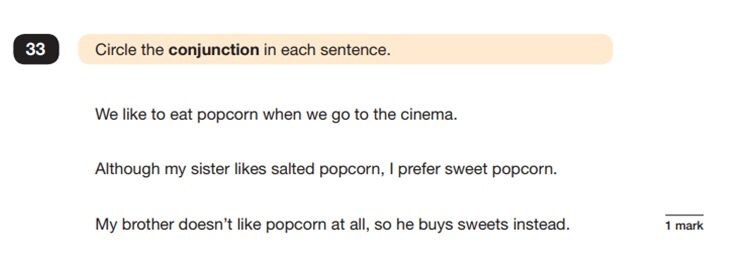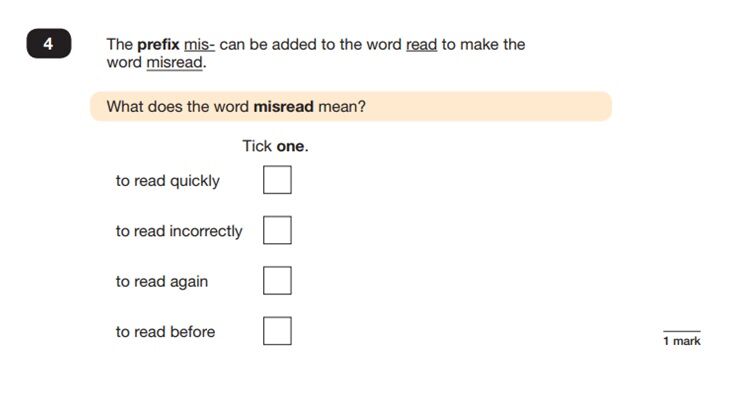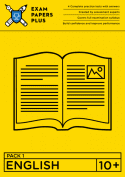
SATs SPaG Test: Essential Skills for Success
Bookmark this page? Pop your email into the box below to receive a link to this article so you can easily refer back to it later.
Table of Contents
Introduction
The SATs SPaG test (Spelling, Grammar and Punctuation), presents Year 6 children with a wide array of questions from the English curriculum. Not only are students tested on their spelling ability, but they are also required to demonstrate knowledge and understanding of the intricacies of the English Language.
In the SPaG test, students may be asked to recognise spelling patterns and use prefixes and suffixes to alter the meanings of words. They can also be asked to identify parts of speech such as adverbs, nouns, subordinate clauses, conjunctions and prepositions. There may also be a selection of questions on the correct use of punctuation. You can understand why this test is often described as one of the hardest amongst the range of SATs papers your child will face!
The questions below are intended to give a brief overview of some of the trickier types of question. In our explanations, we’ve included definitions of the terms and how they are used in language, along with any potential pitfalls to look out for.
Conjunctions

Conjunctions are words that are used to join individual words, phrases or independent clauses together. Simple coordinating conjunctions such as ‘and’, ‘for’ and ‘but’ are used to join parts of a sentence together. Transitional conjunctions on the other hand, are typically used for comparison. E.g. ‘I will write my sentence then check it’, concession, ‘He took his umbrella although it was sunny’, and condition, ‘I will give you the pocket money if you help me wash the car’.
Look out for: the fact that more than one conjunction can be used in a sentence.
Semi-colons

Semi-colons are used to connect two strongly related ideas together, and are generally used when something stronger than a comma is required. Using semi-colons correctly indicates a secure grasp of higher level punctuation and usually helps to make writing more sophisticated.
They can link two independent clauses with a close theme, for example:
‘Some children like bananas; others prefer apples.’
They can link lists with items using commas (to avoid confusion), for example:
‘There are two main ways to create a painting: by sketching and then using watercolours, which is a popular method; or by using oil paints, which requires far more control and skill.’
They can link longer clauses to help avoid confusion, for example:
‘Many artists use natural brushes, water-based paints and canvas; but others, especially beginners, may use less expensive materials to start with.’
Finally, they can link clauses that use conjunctions or transitional phrases that connect clauses on a theme, for example:
‘But however they decide to create, artists all have their own style; as a result, we are rewarded with rich, artistic diversity.’
Look out for: whether the words ‘and’ or ‘but’ could be used instead of the semi-colon. If the answer is yes, then it’s likely that the semi-colon is correctly placed.
Prefixes and Suffixes

Prefixes and suffixes are sets of letters that are placed at the beginning (prefixes) or at the end (suffixes) of a word to create a new word with a different meaning. Prefixes such as un- and dis- change a word into its opposite. For example, happy becomes unhappy and interested becomes disinterested. Suffixes often change the class of a word, for example the verb ‘like’ is changed to the adjective ‘likeable’ and the noun ‘child’ becomes the adjective ‘childish’.
Recognising and using prefixes and suffixes not only gives a clearer understanding of word meaning, it can also help with spelling – particularly if the addition of certain prefixes or suffixes come with rules, such as removing the ‘y’ from happy and adding ‘i’ with the suffix ‘ness’ to form ‘happiness’.
Look out for: unusually spelt prefixes and suffixes, as well as those that require the root word to be changed in some way first.
The Active and Passive Voice

In a sentence that uses an action verb, the subject of the sentence performs the action. For example, in ‘The cat sat on the mat’. The cat is the subject and is carrying out the action of sitting on the mat. This is the active voice, as the subject is ‘active’ in carrying out the action. In the passive voice, the subject is no longer active, but is acted upon. So, ‘The cat sat on the mat’ in the active voice would become, ‘The mat was sat upon by the cat’. The relationship between the subject and the verb has changed and the active nature of the sentence is therefore now passive.
Look out for: confused meanings when active sentences become passive. Often, a change of word order or relationship between subject and verb can alter the meaning of the sentence, or at the very least make it harder to understand.
At Exam Papers Plus, we publish SATs practice tests that can help students prepare for the SPaG test. Our resources are fully up to date to match the style of the new SATs examinations in line with the recent changes to the National Curriculum. Our tests are reviewed and updated regularly to ensure they are current and accurate. Our SATs resources include:
Key Stage 1 SATs Practice Test 1
Key Stage 1 SATs Practice Test 2
Key Stage 2 SATs Practice Test 1
Key Stage 2 SATs Practice Test 2
Related posts:
SATs Arithmetic Paper: Essential Skills for Success
Sample Maths SATs Questions and Answers: Reasoning
Bookmark this page? Pop your email into the box below to receive a link to this article so you can easily refer back to it later.
















